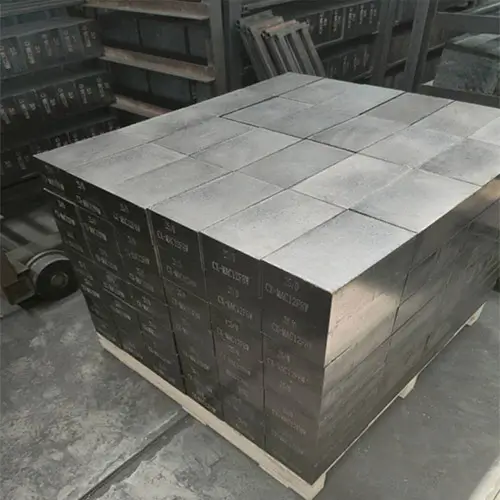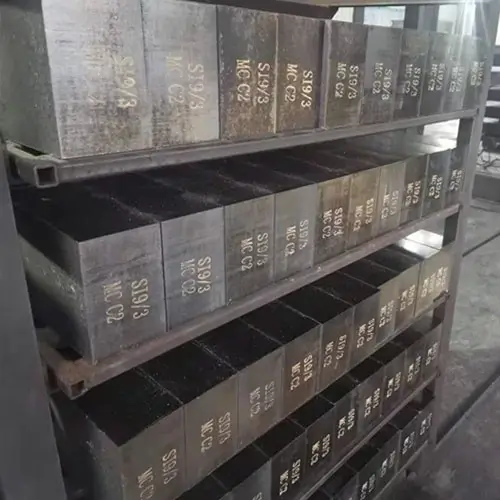Currently common methods to reduce the high temperature erosion of magnesium carbon bricks can be summarised in the following three points:
1. Selection of high-quality materials with stable compositions to improve the erosion resistance, thermal shock resistance and structural spalling resistance of the materials
Selection of high-purity and high-quality electrofused magnesia, which has the advantages of large grain size, high density, low chemical activity, high erosion resistance, and at the same time can resist the self-destructive reaction with carbon at high temperatures and thus inhibit the erosion of MgO particles by the slag. Secondly, increase the content of MgO and reduce impurities, especially limit the content of SiO2, and make the magnesium-carbon brick structure components of the silicate phase to reduce, so that the high temperature side reactions such as SiO2 and graphite to reduce the reaction to avoid the oxidation of carbon. In addition, increasing the degree of crystallisation of MgO crystals prevents dissolution caused by the transformation of the MgO grain boundaries into a liquid phase at high temperatures, and stops further penetration of the slag into the magnesium carbon brick.
Improve the graphite purity can also increase the slag resistance of magnesium carbon bricks, because with the improvement of graphite purity, magnesium carbon bricks thermal shock resistance increases, high temperature flexural strength is also significantly improved. Therefore, generally want to use graphite with carbon content greater than 95%, with the increase of graphite purity, other impurity components are reduced, the contained silicate phase is also less, in the alkaline slag SiO2 will be decarbonised with the carbon in the magnesium carbon bricks decarbonisation reaction to form decarbonised layer, but also with magnesium oxide, ferrous oxide and so on, the formation of the low-melting phase to accelerate the dissolution of the magnesium carbon bricks. Finally, adding appropriate amount of antioxidant to the magnesium carbon brick, and selecting high quality thermosetting binding agent can also improve the high temperature performance of magnesium carbon brick.
2.Optimisation of smelting slag composition
For magnesium carbon brick refractories, the content of MgO in the slag should be increased as much as possible, so that the MgO in the slag is saturated to reduce the dissolution of MgO. As MgO is an alkaline oxide, increasing the slag alkalinity can reduce the chemical reaction between slag and magnesium oxide to reduce the chemical erosion of magnesium carbon bricks. Reducing the content of FeO or other elements in the slag that may have chemical reactions can reduce the slag’s oxidation of MgO and graphite and other reactions.

3.Adoption of external means
On the surface of magnesium-carbon bricks through external means to form a protective layer, preventing magnesium-carbon bricks and slag contact, preventing high-temperature steel / slag to the refractory material internal physical penetration and chemical erosion, such as splash slag furnace protection. Also through the electric field, magnetic field, ultrasonic field and other external field effect on the magnesium carbon brick refractory materials for protection, which external electric field cathodic protection method is a malefactor in recent years the research of refractory materials to resist the high-temperature erosion of molten steel / slag new technology, has attracted the widespread attention of scholars.
More details about magnesium carbon bricks
What are the properties of MgO-C bricks?
MgO-C bricks are composed of magnesia clinker, flake graphite, antioxidants, resin components, etc., and have high resistance to corrosion, spalling, and slag penetration thanks to the characteristics of their constituents.
What are the uses of magnesia carbon bricks?
MgO-C (magnesia-carbon) refractory bricks are widely used in steel industry, the primary consumer of refractory linings, such as basic oxygen furnaces, electric arc furnaces, and ladle furnaces.
What is the melting point of magnesia carbon brick?
2800 degrees Celsius
Magnesia carbon brick is with high melting point alkali oxide magnesium melting point (2800 degrees Celsius) and difficult to be slag infiltration of high melting point carbon material as raw material, add a variety of non oxide additives.
What are the disadvantages of mag C bricks?
The main issues of using MgO-C bricks are the lower oxidation resistance as well as the poor mechanical strength of graphite which causes loosening of the constituents at high temperature leading to reduced wear resistance as well as resistance to chemical corrosion.

